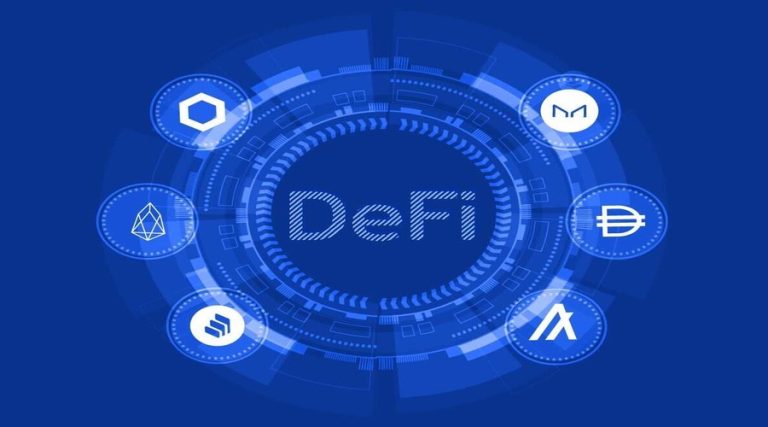
The concept of the metaverse has gained significant attention in recent years. It refers to a virtual space where people can interact, create content, and engage in various activities using virtual reality (VR) and augmented reality (AR) technologies. With the rise of non-fungible tokens (NFTs), a new dimension has been added to the metaverse, allowing for the ownership and trade of unique digital assets. In this article, we will explore the role of NFT interoperability in the metaverse and its implications for users, creators, and the overall ecosystem.
What are NFTs and the Metaverse?
Before delving into the role of NFT interoperability, let’s briefly understand what NFTs and the metaverse are. NFTs are unique digital assets that are stored on a blockchain, typically using Ethereum’s blockchain technology. These assets can represent various forms of digital content, such as art, music, collectibles, virtual real estate, and more. NFTs provide proof of ownership and authenticity, making them highly valuable in the digital realm.
The metaverse, on the other hand, is a virtual space that allows users to interact with each other and experience various digital activities. It can encompass virtual worlds, games, social platforms, and even immersive experiences through VR and AR technologies. The metaverse is built on the idea of a shared and interconnected digital universe, where users can explore, create, and transact.
The Importance of NFT Interoperability
NFT interoperability plays a crucial role in the metaverse, enabling seamless connectivity and interaction between different platforms and ecosystems. It allows users to transfer their NFTs across multiple platforms, ensuring that their digital assets can be utilized in various virtual environments. Here are some key reasons why NFT interoperability is important:
Facilitating Cross-Platform Transactions
Interoperability enables users to freely trade, sell, and exchange NFTs across different platforms. It eliminates the barriers that arise from platform-specific restrictions and creates a more liquid and interconnected market. For instance, a user who owns a virtual artwork in one metaverse can easily transfer it to another metaverse and continue showcasing or selling it there. This interoperability expands the reach and potential value of NFTs, fostering a more vibrant and dynamic ecosystem.
Expanding Creative Possibilities
NFT interoperability empowers creators by allowing them to leverage their digital assets across multiple platforms. Artists, musicians, and other content creators can reach a wider audience and monetize their creations in different metaverses. This flexibility encourages innovation and collaboration, as creators can combine their talents and assets to build immersive experiences that transcend individual platforms. NFT interoperability thus fuels creativity and drives the evolution of the metaverse as a whole.
Building Trust and Authenticity
One of the key advantages of NFTs is their ability to establish ownership and provenance. NFT interoperability extends these attributes beyond individual platforms, creating a network of trust and authenticity across the metaverse. Users can verify the origin and history of an NFT, regardless of the platform it originated from. This transparency and traceability enhance confidence in the digital asset market, mitigating concerns related to counterfeit or unauthorized reproductions.
Enhancing User Experience
NFT interoperability enriches the user experience within the metaverse by enabling seamless transitions between different virtual environments. Users can carry their digital identities, avatars, and NFT collections across platforms, maintaining their virtual presence wherever they go. This continuity promotes engagement and loyalty, as users are not limited to a single metaverse and can explore diverse experiences offered by various platforms. NFT interoperability ultimately enhances the sense of immersion and connection within the metaverse.

Challenges and Considerations
While NFT interoperability brings numerous benefits, it also poses certain challenges and considerations. Technical standards, security measures, and governance frameworks need to be established to ensure smooth cross-platform transfers and protect users’ assets. The complexity of integrating different blockchain technologies and addressing potential vulnerabilities requires careful planning and collaboration among stakeholders. Moreover, striking a balance between interoperability and maintaining platform-specific features and identities is crucial to avoid homogenization within the metaverse.
- Technical Integration: Integrating different blockchain technologies and ensuring seamless interoperability between platforms can be technically complex. Establishing standardized protocols and frameworks is necessary to enable smooth cross-platform transfers.
- Security: NFT interoperability introduces security challenges. Ensuring the protection of users’ assets during cross-platform transfers requires robust security measures, including encryption, authentication, and secure wallet integration.
- Governance and Standards: Establishing governance frameworks and technical standards for NFT interoperability is crucial. Clear guidelines are needed to address issues such as dispute resolution, intellectual property rights, and regulatory compliance in a cross-platform environment.
- Scalability: As the popularity of NFTs and the metaverse grows, scalability becomes a challenge. The ability to handle a large volume of cross-platform transactions without compromising speed and efficiency is essential for a seamless user experience.
- User Experience: Striking a balance between interoperability and platform-specific features is crucial to maintain a unique user experience within each metaverse. Ensuring that interoperability does not lead to homogenization or loss of distinct identities is a challenge that needs to be addressed.
- Education and Awareness: Educating users about the benefits and risks of NFT interoperability is important. Enhancing awareness about best practices, security measures, and responsible usage will contribute to a safer and more informed NFT ecosystem.
- Collaboration and Coordination: Achieving NFT interoperability requires collaboration among different platforms, blockchain developers, and industry stakeholders. Coordinating efforts and establishing partnerships will be crucial to overcome technical and operational challenges.
- Regulatory Environment: NFT interoperability may face regulatory scrutiny in various jurisdictions. Adapting to evolving regulations and ensuring compliance with legal requirements present additional challenges for cross-platform transfers.
- Asset Authenticity: Verifying the authenticity of NFTs in a cross-platform environment can be challenging. Developing mechanisms to validate the origin and provenance of assets and preventing fraudulent activities are important considerations.
- User Trust and Privacy: Building and maintaining user trust is vital in the metaverse. Ensuring user privacy, data protection, and consent management when interacting with multiple platforms and transferring NFTs are essential for fostering a secure and trusted ecosystem.
Addressing these challenges and considerations will be crucial to unlocking the full potential of NFT interoperability in the metaverse. It requires collaboration, technological advancements, and a commitment to user-centric solutions that prioritize security, privacy, and a seamless user experience.
Future Prospects
The future of NFT interoperability in the metaverse looks promising. As the technology evolves and standards mature, we can expect more seamless cross-platform transfers and interactions. Interoperability protocols and frameworks will likely emerge to facilitate secure and efficient interoperability across various metaverses. With increased adoption and innovation, NFTs will continue to reshape the digital landscape, enabling new forms of creativity, ownership, and social interactions.
- Expanded Interconnectivity: The future of NFT interoperability in the metaverse holds the potential for even greater interconnectivity. As technology advances and interoperability protocols mature, we can expect seamless transfers and interactions between a wide range of metaverses and virtual platforms.
- Emergence of Interoperability Standards: With increased adoption of NFTs and the growing importance of interoperability, industry-wide standards are likely to emerge. These standards will define technical protocols, data structures, and governance frameworks, promoting interoperability across different blockchain networks and metaverses.
- Cross-Metaverse Experiences: NFT interoperability will enable users to experience seamless transitions between various metaverses. Users will be able to carry their digital identities, assets, and achievements across platforms, fostering a sense of continuity and enhancing their overall metaverse experience.
- Cross-Platform Collaboration: NFT interoperability will facilitate collaboration between creators, artists, and developers across different metaverses. Collaborative projects, virtual exhibitions, and cross-platform events will become more prevalent, driving innovation and pushing the boundaries of what is possible within the metaverse.
- Evolving Business Models: NFT interoperability will pave the way for new business models and revenue streams. Platforms may explore cross-platform royalties, secondary market fees, and value-added services that transcend individual metaverses, providing additional opportunities for creators, collectors, and investors.
- Integration with Real-World Assets: As NFTs gain more mainstream adoption, we can expect increased integration with real-world assets. Interoperability will enable the seamless transfer of ownership and value between digital and physical assets, revolutionizing industries such as art, real estate, and collectibles.
- Enhanced User Empowerment: NFT interoperability will empower users with greater control and ownership of their digital assets. Users will have the freedom to utilize their NFTs across multiple platforms, giving them more flexibility, options, and opportunities for monetization.
- Interconnected Digital Economies: NFT interoperability will contribute to the development of interconnected digital economies. Cross-platform transactions, collaborations, and value exchange will create a vibrant and dynamic ecosystem where users can participate, contribute, and thrive.
As NFT technology and the metaverse continue to evolve, the future prospects of NFT interoperability hold immense promise. It will shape the way we interact, create, and transact within the digital realm, unlocking new possibilities and revolutionizing the concept of ownership and value in the metaverse.
Conclusion
NFT interoperability holds immense potential for the metaverse, allowing users to freely transfer and utilize their digital assets across multiple platforms. It facilitates cross-platform transactions, expands creative possibilities, builds trust and authenticity, and enhances the overall user experience. However, addressing technical challenges and ensuring the right balance between interoperability and platform-specific features will be crucial for the sustainable growth of the metaverse. As we journey further into the digital realm, NFT interoperability will be a key enabler of a more interconnected and immersive metaverse.
FAQs
- How can NFT interoperability benefit creators in the metaverse?
- NFT interoperability enables creators to reach a wider audience and monetize their assets across multiple platforms. It expands their creative possibilities and fosters collaboration within the metaverse.
- Are there any risks associated with NFT interoperability?
- While NFT interoperability offers various advantages, it also introduces challenges related to technical standards, security, and governance. These risks need to be carefully addressed to ensure the safe transfer and protection of users’ digital assets.
- Can NFTs from different platforms be combined or exchanged?
- Yes, NFTs from different platforms can be combined or exchanged through interoperability protocols. This allows users to leverage their assets in different metaverses and explore new opportunities.
- Will NFT interoperability affect the value of existing NFTs?
- NFT interoperability has the potential to increase the value of existing NFTs by expanding their market reach and facilitating cross-platform transactions. However, the value of individual NFTs will still depend on factors such as scarcity, demand, and the reputation of the creator.
- How can users ensure the security of their NFTs in a cross-platform environment?
- Users can ensure the security of their NFTs by adopting best practices such as using secure wallets, verifying the authenticity of platforms and marketplaces, and staying informed about potential vulnerabilities. It’s important to prioritize security and exercise caution when engaging in cross-platform NFT transactions.
I have been writing about cryptocurrencies for over two years and I’m widely considered one of the most knowledgeable and respected authors in the space. I have a deep understanding of the underlying technology and market dynamics, and my insights have helped countless investors make informed decisions about their portfolios. I’m a speaker and commentator, and my work has been featured in major publications such as CoinDesk, Forbes, and The Wall Street Journal. I also run a popular cryptocurrency trading signals service that has helped thousands of people make money in the volatile but potentially lucrative world of digital assets.


